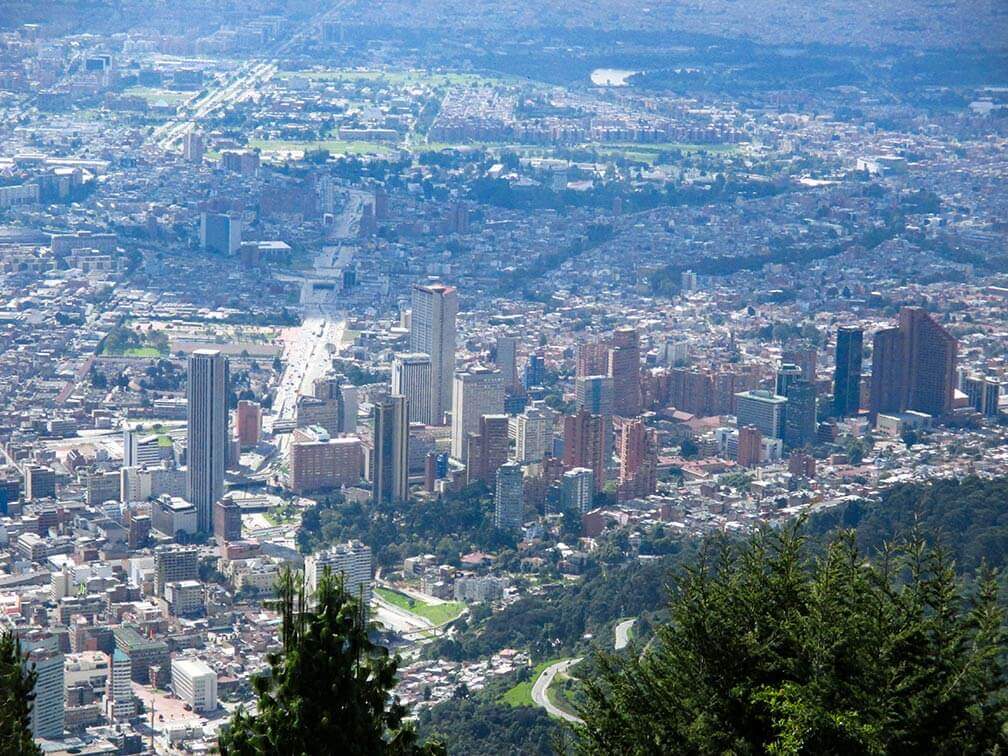 The capital city of Colombia, Bogotá, is a dynamic and modern city that sits in the Andean mountain range at 2,600 meters high, in the páramo area and well known for the hailstorms that look like snow but it is not!, are millions of ice cubes.
The capital city of Colombia, Bogotá, is a dynamic and modern city that sits in the Andean mountain range at 2,600 meters high, in the páramo area and well known for the hailstorms that look like snow but it is not!, are millions of ice cubes.
What is now the savannah of Bogotá, was occupied 30,000 years ago by a lake. Sometimes, in the month of August, snow can fall.
While it is true that Bogotá is not considered hot land, it is also true that it is known for having all four seasons in the same day. That’s why before leaving home you should take an umbrella in case it rains, a light T-shirt in case it is hot, a buso in case it is a little cold and a jacket or coat in case it is very cold. The weather in Bogotá is somewhat unpredictable weather
Although the city is usually cold, it is totally counterbalanced by the warmth of its inhabitants and the warmth of the delicious Colombian coffee.
Our week-old visit took us to know some sites inside and outside the city that we want to share in today’s article.
Join us!
Monserrate Hill
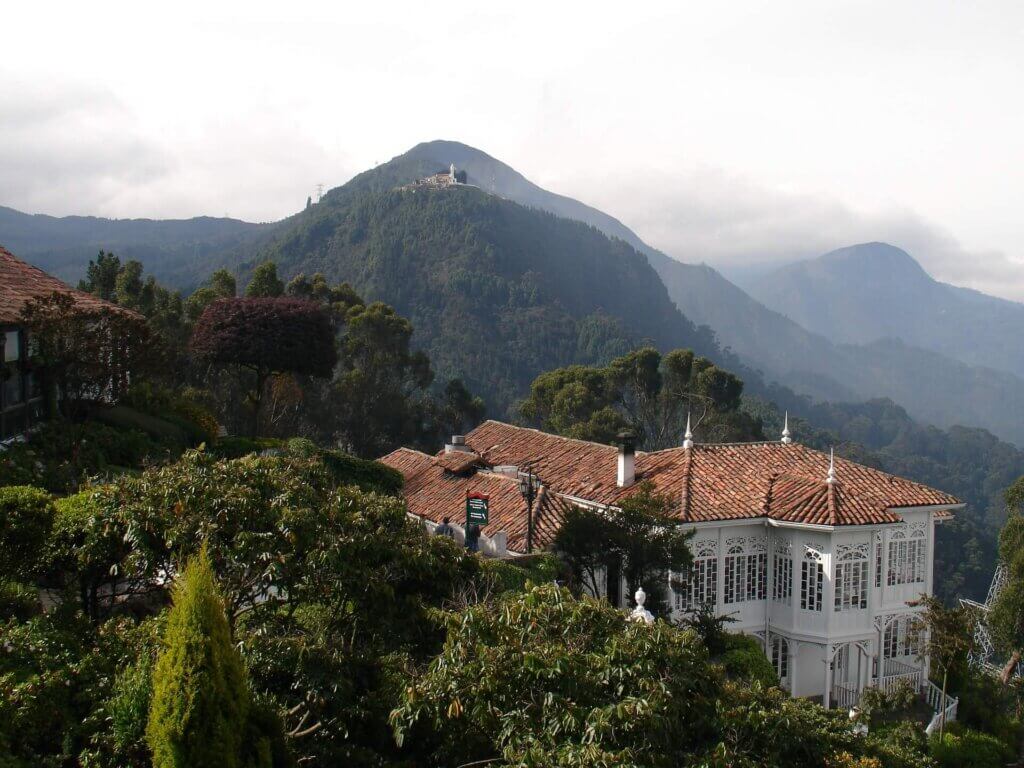 At 3,100 meters high, The Monserrate Hill is the highest peak in the city.
At 3,100 meters high, The Monserrate Hill is the highest peak in the city.
It can be accessed via a cable car, train or take a 2.5-kilometer walk. The latter is the favorite of the pilgrims.
Monserrate is not only a tourist destination, it is a route of devotion and pilgrimage, especially during Holy Week or Easter.
There is the Basilica Sanctuary of the Fallen Lord of Monserrate, dedicated to the Fallen Christ and dating from 1920. But the most pleasant memory we took away from there was the stunning sunset over the valley where Bogotá sits. Just for this show, monserrate is worth a visit.
Salt Cathedral
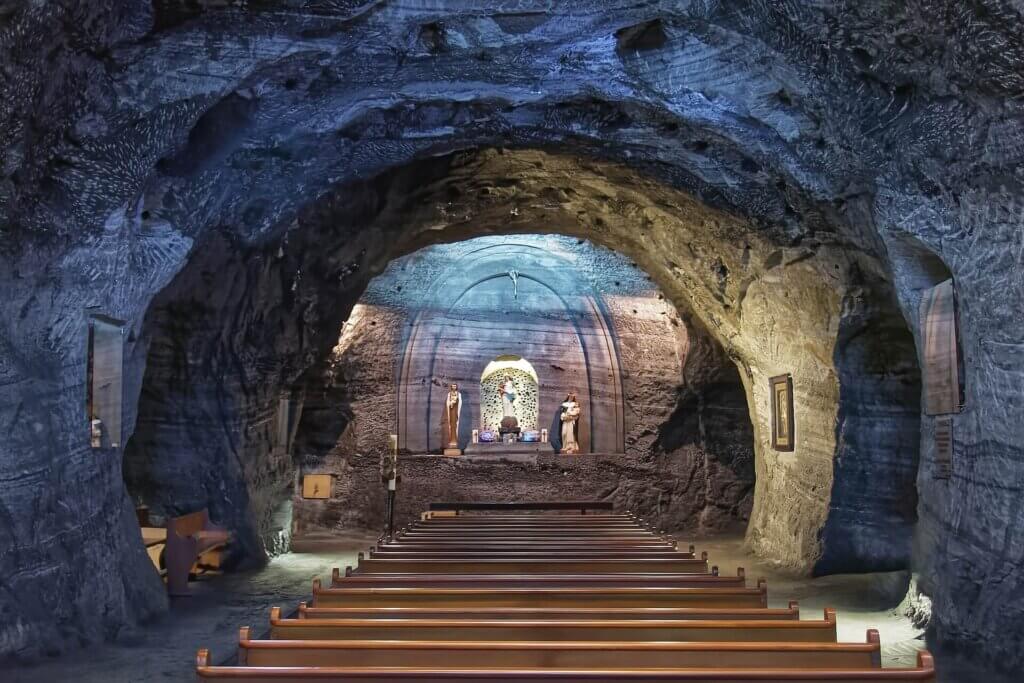 29 kilometers from Bogotá is the city of Zipaquirá. This small town is world famous because it houses the Salt Cathedral,the architectural wonder of Colombia.
29 kilometers from Bogotá is the city of Zipaquirá. This small town is world famous because it houses the Salt Cathedral,the architectural wonder of Colombia.
Since the first quarter of the twentieth century, salt has been exploited in this region. In the 30s of the last century, when observing the religiosity of the miners who prayed for protection before going to work, it was decided to build a small underground chapel.
This grew to be an authentic basilica underground. However it was closed in 1991 due to structural failures and the construction of a new one was planned.
The new cathedral was opened to the public in 1995. The one that is appreciated today is a wonderful work that, together with a play of lights and colors, create a majestic and devotionful atmosphere.
It even has a grandiose vault that resembles the inner part of the domes of cathedrals. There is a water mirror that reflects the illuminated ceiling, adding majesty to the enclosure.
Bolivar’s House
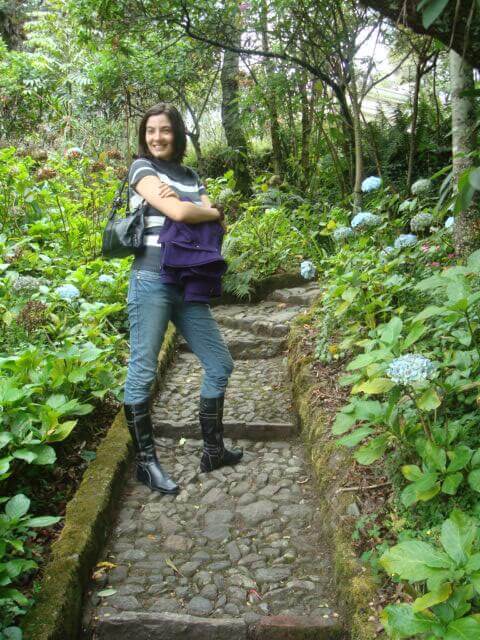 In the historic center of Bogotá is the town of La Candelaria. There stands the almost bicentennial Quinta de Bolívar, today a museum.
In the historic center of Bogotá is the town of La Candelaria. There stands the almost bicentennial Quinta de Bolívar, today a museum.
The grateful Colombian nation granted this house, after its restoration to Simón Bolívar in 1821, for his services rendered. Between that year and 1830 the Liberator stayed there every time he visited Bogotá. In 1827 it was embellished and turned into a political center by Manuela Sáenz.
The house is of colonial style and in it are presented exhibitions, samples and workshops related to Bolivar and his time, as well as the times of the Colony. The beautiful and manicured gardens made our walk around a very pleasant experience.
The love, even devotion, that is had in Colombia for the figure of Bolivar, seemed to us that it even exceeds that observed in Venezuela, which is quite a lot.
Historic district of candelaria
 A true museum of outdoor art, La plaza chorro de Quevedo, located in the historic district of La Candelaria have become one of the references of the graffiti movement worldwide.
A true museum of outdoor art, La plaza chorro de Quevedo, located in the historic district of La Candelaria have become one of the references of the graffiti movement worldwide.
This movement was prompted by the murder of a young graffiti artist at the hands of the police for painting on a bridge. The policeman accused him of stealing, but reactions from family members and graffiti artists led to an explosion of graffiti throughout Bogota, especially in La Candelaria.
It’s a pretty entertaining ride and a lot of graffiti is really remarkable.
Although this is a fairly busy area it is also recommended to be warned and protect your personal belongings well as it is an area with poor sectors around.
Restaurant Andrés Carne de Res
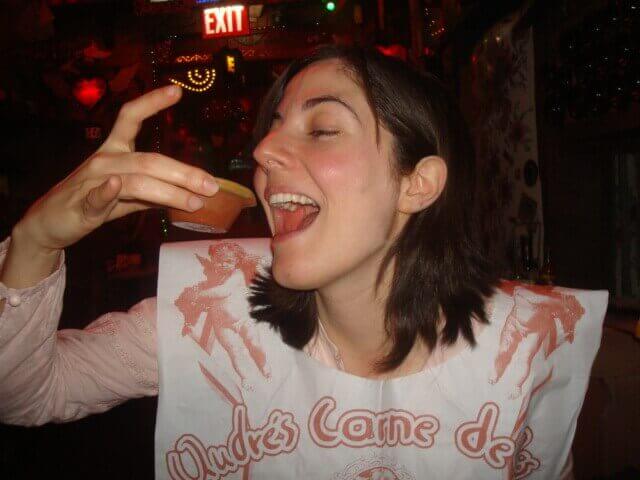 Located on Calle 3 No. 11a-56, Chia 250001 Colombia, the Andrés Carne de Res Restaurant specializes in meats and its colorful and festive atmosphere make it a must-see place.
Located on Calle 3 No. 11a-56, Chia 250001 Colombia, the Andrés Carne de Res Restaurant specializes in meats and its colorful and festive atmosphere make it a must-see place.
It offers live music, with bands that perform various genres: tropical, traditional Colombian, ballads and pop.
But if you want to immerse yourself in the variety of flavors and smells, Bogotá offers you other very interesting options such as the Plaza de la Perseverancia, Plaza de las Nieves, Plaza de Paloquemado that in addition to being rich prices are very affordable
Gold Museum
 One of the jewels and must-see of Bogotá is the Gold Museum, located in the Plaza Bolivar in a central bank.
One of the jewels and must-see of Bogotá is the Gold Museum, located in the Plaza Bolivar in a central bank.
The place looks more like a bank vault than a conventional museum with a large security display and it’s no wonder. This collection houses the goldsmithing work of the ancient Colombian indians, one of the most advanced and beautiful worldwide.
The rich variety of objects in gold shows an advanced technique in the work of gold. You can see recognizable objects such as boats, instruments, zoomorphic and anthropomorphic figures. Special interest attract the alleged “airplanes”, which are figures that look like airplanes (with side wings and tail, tail rudders, cockpit) that have been put as “evidence” of extraterrestrial visits in antiquity by some authors such as Charles Berlitz.
Botero Museum
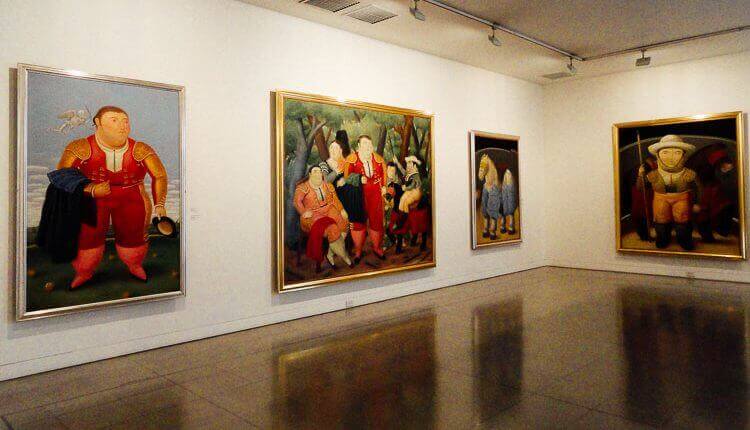 Near the Gold Museum you can visit the Botero Museum, which houses one of the best art collections in Latin America, especially the most famous painter of the twentieth century of Colombia: Fernando Botero.
Near the Gold Museum you can visit the Botero Museum, which houses one of the best art collections in Latin America, especially the most famous painter of the twentieth century of Colombia: Fernando Botero.
In 2000, Botero donated more than 208 works of art, 85 of which were by international artists and the rest by the Colombian himself and this served as the basis for the creation of the museum. The museum was installed in a beautiful colonial mansion and admission is free. In addition to Botero’s works, you can admire pieces by Chagall, Degas, Pissarro, Matisse, Braque, Balthus, Dalí, Picasso, Miró, Delauny, Monet, among others.
Transportation in Bogotá
 The Transmilenio is the bus system of Bogotá, with its characteristic red color, which has roads and stops that are exclusive to these vehicles. The arrival of the buses is predetermined and they are usually quite punctual.
The Transmilenio is the bus system of Bogotá, with its characteristic red color, which has roads and stops that are exclusive to these vehicles. The arrival of the buses is predetermined and they are usually quite punctual.
The Transmilenio has been an example in terms of transport management for other Latin American cities. Overall, however, Bogota remains a chaotic city in terms of transportation. And we are talking about a metropolis of 13,000,000 inhabitants, which does not have a metro system.
Despite this, on Sundays Bogotá becomes friendlier, more pedestrian and cyclist, with the closure of many main roads and with Bogotans launching into sports and recreational activities.
Conclusions
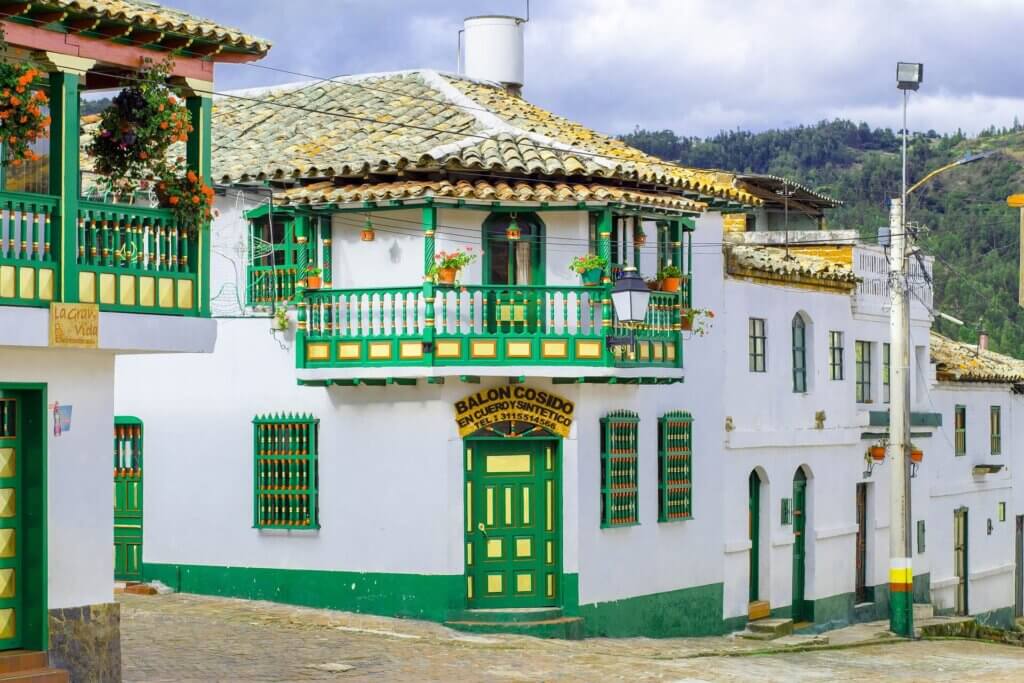 A modern megametrópolis, but one that refuses to forget its glorious past, so is Santa Fe de Bogotá.
A modern megametrópolis, but one that refuses to forget its glorious past, so is Santa Fe de Bogotá.
City full of libraries and bookstores, a vibrant cultural, artistic and nocturnal life is, at the same time, a city that preserves its historical traditions and above all its Catholic devotion.
Bogota is slow-spoken, very courteous and is usually very educated. All this adorned with the warmth that it usually shows to own and strangers who visit Bogotá.
